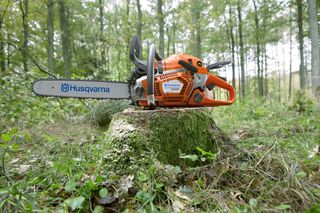
Weeds in the lawn – How to remove weeds in grass
Are you struggling with weeds in your lawn? You’re not alone! Let us help you with our guide to a weed-free lawn.
Many garden enthusiasts aim for a green, healthy lawn without moss and weeds. However, weeds are often tenacious, so persistence is necessary to outcompete them and create the perfect lawn.
Healthy grass outcompetes weeds
One key to success is making the grass dominant and outcompeting the weeds rather than the other way around. It requires some work and persistence, but you will be rewarded later.
Mow often but not too short
An excellent way to control weeds in the lawn is to mow the grass frequently. Weeds do not thrive as well then. A robotic mower that cuts continuously is a smooth and efficient solution since the clippings it leaves behind fertilise the lawn and provide continuous nourishment. A common mistake is mowing the lawn too short. It looks neat, but it weakens the grass and gives weeds, which also like air and light, an advantage. You want a dense lawn but don’t automatically get one just by cutting it short. Raise the mowing height a bit to about 5-6 centimetres. Then, you’ll have a denser, more durable lawn that better resists weeds and prevents them from spreading.
Aerate with a scarifier
Giving the grass as much air and light as possible is also important. You can achieve this with a scarifier. It clears among the roots, creates space for the healthy grass, and makes small air holes a few centimetres down into the soil. This improves the grass’s oxygenation and drainage. Better drainage, in turn, means that water and nutrients penetrate the roots more easily. This makes the grass stronger and more resistant to weeds.
A lawn needs water, nutrients, and love
To achieve a strong and vibrant lawn, it’s also important to fertilise and water generously. Top dressing once or a few times a year adds nutrients to the lawn, making it easier to outcompete the weeds.
Not all weeds are bad
Daisies, clover, and buttercups are examples of plants that are technically considered weeds but which most people think of as flowers they like to keep in their lawns. Retaining wild flowers also makes your garden more attractive to bees and other beneficial and valuable insects. So, perhaps the best approach is to combat weeds in the lawn with moderate intensity.
Read more about Biodiversity and how to help nature.
5 Tips for Combating Weeds in the Lawn:
- Mow often
- Do not cut too short. Let the grass grow to 5-6 cm
- Aerate the roots with a scarifier
- Provide nutrients and water
- Be patient









